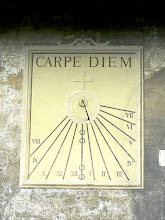NEVER LET ME GO, de Kazuo Ishiguro
NEVER LET ME GO, by Kazuo Ishiguro, Published: Knopf. 304 pages
This novel is a tale riddled with mystery narrated by Kathy, a carer, who is looking back on her schooldays at picturesque Hailsham. (** See Synopsis)
An unsetting strangeness emanates from her reminiscences. What seems at first to be a near-idyll of benign teachers and sporting triumphs, gradually, through Kathy's rosy-tinted retrospect, assumes the dimensions of a horrific situation.
Nagasaki-born Kazuo Ishiguro, is the author of five previous novels, including The Remains of the Day, which won the Booker Prize in 1989 and became a best seller around the world and was made into a successful film. His work has been translated into 28 languages.
If there is an abiding theme in the novels of Kazuo Ishiguro, that English writer of Japanese origin, it is the memory.
Through memory we reconstruct and make sense of the past, individually and collectively; it is also the way we reinterpret and even distort the past, for memory is always selective.
Ishiguro's latest novel "Never Let Me Go" does not deal with memory, but with the opacity regarding the future that comes from living life, as we do, in a continuous present.
Somehow, we blind ourselves before the knowledge of our mortality. Ishiguro's characters and their situations are always, to some extent, a metaphor for the human condition.
_________________________________
SYNOPSIS
(**) Hailsham is the school. The novel is the story of three young people, Kathy, Ruth and Tommy, told from their childhood, to boarding school, until their emergence into the outside world.
The school is a safe, pleasant place in which the children are encouraged to be creative and even express themselves sexually, as they mature into adolescents under the protection of adult guardians.
Beneath the mundanity of their daily life, the reader begins to wonder: where are the parents? Who are these children? Where is the story going?
It transpires that the children are clones, bred to be future organ donors. They are not informed of their condition all at once; knowledge comes about in bits and pieces, until words like: one's "possible" (the person from whom they were cloned), or: "completing" (an euphemism for dying, once a number of vital organs have been removed) are apparently accepted.
This might seem like giving the plot away, but then the "plot", in this case, is not really what the novel is "about".
His story, Ishiguro says, "is a metaphor for every human's journey from birth to death. The questions the characters ask are what we all wonder, about where our lives are going. Can they escape their fate? Can love make a difference?
As donors, their fate -death-, is something they know intellectually, but try not to see."
Using the idea of clones was a way of compressing this experience, with the suggestion that science, in our world, is in some ways out of control.
The mystery elements are there, he says, because.... "I want the readers to work too. I wanted to take them on a parallel journey, but the book is not a mystery. My focus is elsewhere".
Though at times it seems almost banal --the events, the narrative voice of Kathy, the careful prose-- an ineffable and increasing air of sadness pervades the novel.
Near the end, in one of the few openly emotional passages in the book, Tommy has a vision of "two people in the water, trying to hold onto each other, holding on as hard as they can, but in the end it's just too much. The current's too strong. They've to let go...."
It is this lament, read agaisnt the plea of the book's title, which may haunt the reader, later, on reflection.
==================================================
THE LIBERATION TOWER, in Kuwait
The symbol of Kuwaiti liberation, the unmistakable sign of the country's resurgence, the Liberation Tower is one of the tallest telecommunications towers in the world.
HH the Amir, Sheikh Jaber Al-Ahmad Al-Jaber Al-Sabah, inaugurated this telecommunications tower in Kuwait City on March 10, 1996.
This 372-metre structure is about 40 meters taller than the Eiffel Tower. It was named after the multinational coalition that liberated the nation from seven months of Iraqi occupation during the Gulf War. The tower has now become a symbol of resurgent Kuwait. The structure uses ceramic tiles on the façade from the base to the first mezzanine level, which is about 308 meters above the ground. Three light natural shades provide a geometric design from the base.
The tower and the telecommunications complex is divided into three working areas:
a public communications center;
the revolving observation level and restaurant at 150 meters;
and the adjacent plant and equipment structure.
There are 18 elevators, two of which are glass enclosed and can accommodate 21 passengers each. They are also among the fastest in the world at 6.3 meters per second.
Above the revolving mezzanine, six floors of offices with a total floor space of 12,000 sq. m. rise up and out in a section encased in anodized aluminum, designed to withstand Kuwait's extreme temperatures.
========================================


0 Comments:
Post a Comment
<< Home